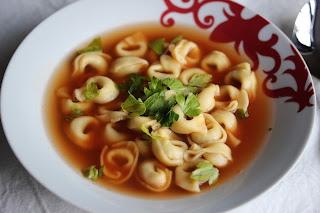Good evening, Raffies!
Today we are going to Vietnam and enjoying a very simple, but delicious dish: fried tilapia with green mango, in Vietnamese Cá rô phi chiên giòn chấm mắm xoài xanh.
I have always thought the Vietnamese was really fascinating, because of its strong French influence in its dishes. Vietnam used to be a French colony and its cuisine evolved with a French note. If you think about the puff pastry chicken pies, raw fish and chips, or French fries, crêpes with pork and prawns and baguettes. All the richness of French cuisine with an Asian flair.
Since it has been a while since our last fish, I decided to go for a really easy and simple dish for Vietnam. Secretly, I also wanted to practice my mango-papaya chopping skills :)
The recipe is taken from "My Vietnamese Kitchen" by Uyen Luu:
1 tbsp vegetable oil
1 whole red tilapia (any other fish might also work, like sole, nile perch, red snapper, etc.)
1 unripe green mango, julienned (I used 2, because they were very small)
2 tbsp cider vinegar
2 tbsp sugar
2 tbsp fish sauce
2 garlic cloves, finely chopped
2 chillies, chopped
Heat the oil in a pan and fry the fish until crispy brown. Approximately 10 minutes on each side.
Mix the ingredients for the dressing in a bowl - the vinegar, sugar, fish sauce, garlic and chillies. Place the mango on a plate. Arrange the fish on top of the mango and drizzle with the sauce.
Serve with rice. Enjoy!
Our tilapia just happened to be filets instead of a whole..well, you can't have everything, right?
The green mango combined wonderfully with the fried fish and we accompanied it with some nice white rice. Delicious!
Love,
Raffi
















































